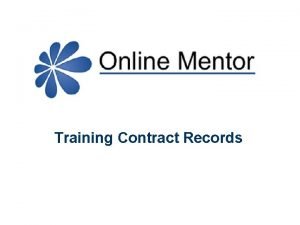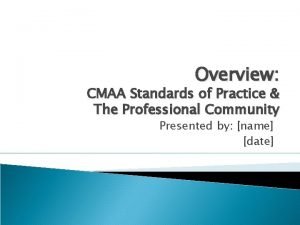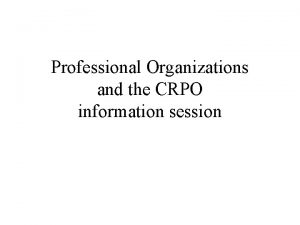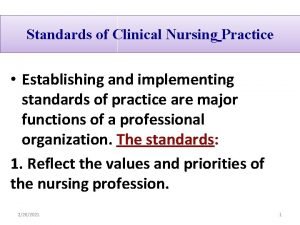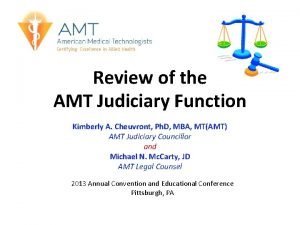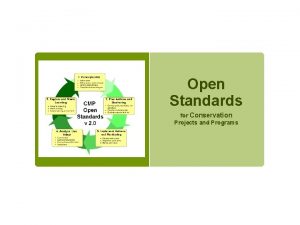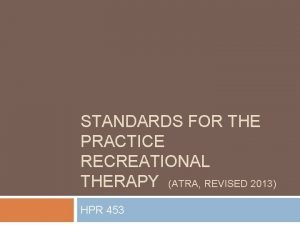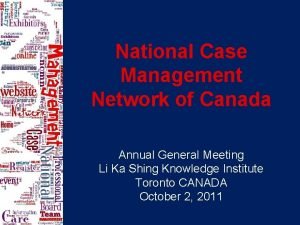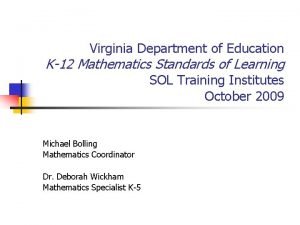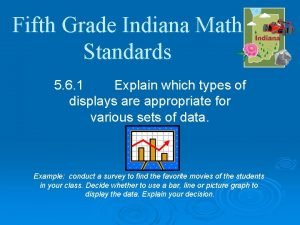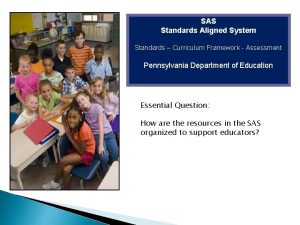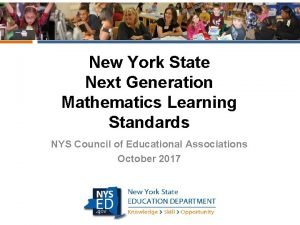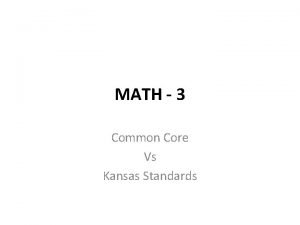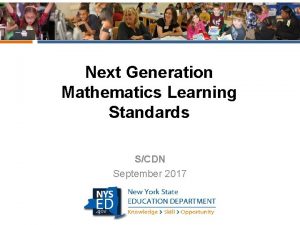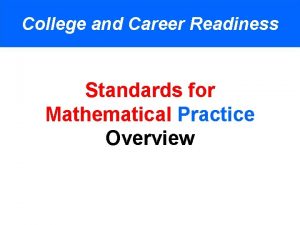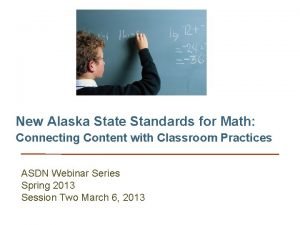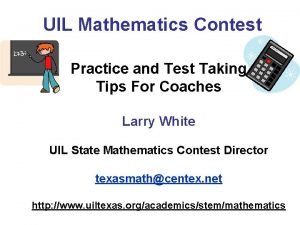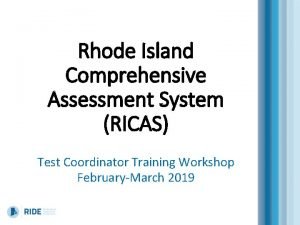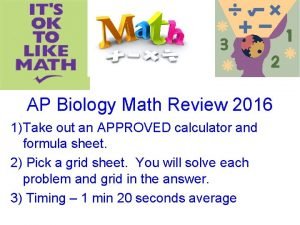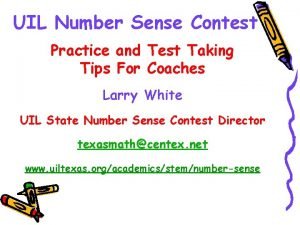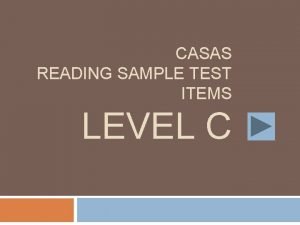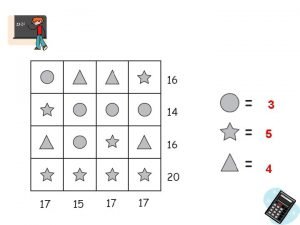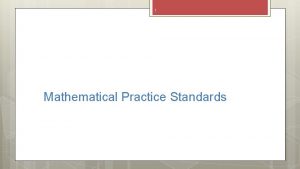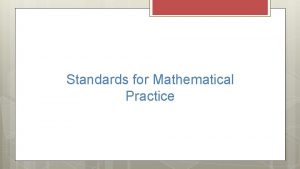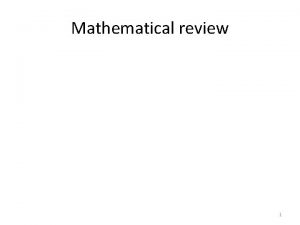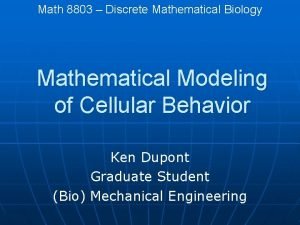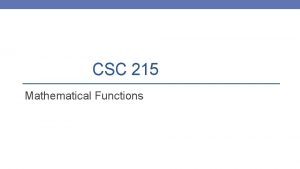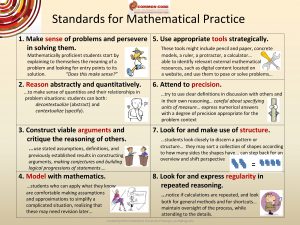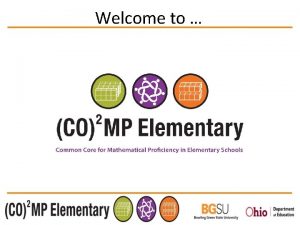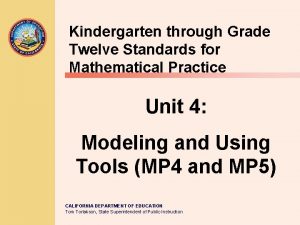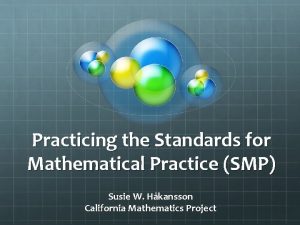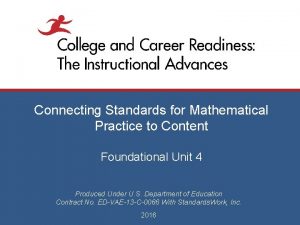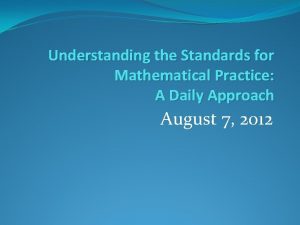Math 8 Math II Mathematical Practice Standards ReviewNew




































- Slides: 36

Math 8, Math II Mathematical Practice Standards Review/New Information Vincent

Unit 1 - Lesson 1 This course is not only to increase your mathematical content knowledge but also to help develop your mathematical character. The development of mathematical character can be increased by utilizing the Standards for Mathematical Practice. PWV

Essential Understandings: I will understand that… • an algorithm is a process or set of rules to be followed in calculations or other problem-solving operations. • there a variety of ways and strategies to problem solve and complete tasks. • there are eight Mathematical Practice Standards that go along with the content standards.

Unit 1 - Lesson 1 What is mathematical character? It can be increased by utilizing the Standards for Mathematical Practice. It involves continued experimentation, intense critical observation or examination, and the development of shared knowledge about what works and does not—in different situations.

Unit 1 - Lesson 1 Essential Understanding(s) I understand that. . . there are eight Mathematical Practice Standards that go along with the content standards. PWV-2 days


Standards for Mathematical Practice: Standard Standard 1: Make sense of problems and persevere in solving them. 2: Reason abstractly and quantitatively. 3: Construct viable arguments and critique the reasoning of others. 4: Model with mathematics. 5: Use appropriate tools strategically. 6: Attend to precision. 7: Look for and make use of structure. 8: Look for and express regularity in repeated reasoning.

There a variety of ways and strategies to problem solve and complete tasks. George Polya’s Problem Techniques Polya’s First Principle: Understand the problem Do you understand all the words used in stating the problem? • What are you asked to find or show? • What is given? • Can you restate the problem in your own words? • Can you think of a picture or diagram that might help you understand the problem? • Is there enough information to enable you to find a solution? • Is there extraneous information? • Is this problem similar to another problem you have solved? • https: //math. berkeley. edu/~gmelvin/polya. pdf

There a variety of ways and strategies to problem solve and complete tasks. George Polya’s Problem Techniques Polya’s Second Principle: Devise a plan • Guess and check • Make an orderly list • Draw a diagram • Use symmetry • Consider special cases • Use direct reasoning • Solve an equation • Use dimensional analysis • • Look for a pattern Draw a picture Solve a simpler problem Use a model Work backwards Use a formula Use a variable https: //math. berkeley. edu/~gmelvin/polya. pdf

There a variety of ways and strategies to problem solve and complete tasks. George Polya’s Problem Techniques Polya’s Third Principle: Carry out the plan This step is usually easier than devising the plan. In general, all you need is care and patience, given that you have the necessary skills. Persist with the plan that you have chosen. If it continues not to work discard it and choose another. Don’t be misled, this is how mathematics is done, even by professionals. Don’t be afraid to start over. https: //math. berkeley. edu/~gmelvin/polya. pdf

There a variety of ways and strategies to problem solve and complete tasks. George Polya’s Problem Techniques Polya’s Fourth Principle: Look back Polya mentions that much can be gained by taking the time to reflect and look back at what you have done, what worked, and what didn’t. Doing this will enable you to predict what strategy to use to solve future problems. • Examine the solution obtained. • Can you check the result? Can you check the argument? • Can you derive the solution differently? Can you see it at a glance? • Can you use the result, or the method, for some other problem? https: //math. berkeley. edu/~gmelvin/polya. pdf

Essential Understandings: Students will understand that… • there a variety of ways and strategies to problem solve and complete tasks. Essential Question: How can the strategies learned for solving mathematics problems apply to real-life situations?

Essential Question: How can the strategies learned for solving mathematics problems apply to real-life situations? • How are you a problem solver in everyday life? What do you think are the characteristics of a good problem solver (traits such as organized, methodical, thorough, never gives up, etc. ) What other strategies/processes have you used in the past when solving everyday problems? What other strategies/processes have you used in the past when solving math problems? Go over expectations for group work (collaboration)

Unit 1 - Lesson 1 Since you are familiar with the eight practice standards, do a self-assessment. Where are you in building your mathematical character? Keep your self-assessment to reference and update throughout the year. SMP self-assessment

Evidence of Student Learning: Day 1: Give students three to five minutes to reflect on the practice standards discussed today and create math goals for the upcoming year. Complete: Standards for Mathematical Practice Self-Assessment (SMP self-assessment)

Evidence of Student Learning: Using the self-evaluation from class, explain how you plan to improve one or two of the problem solving strategies in order to become a better problem solver. If there is time, share your ideas with a partner or small group.

Begin Review of Vocabulary

Mathematically proficient students communicate precisely by engaging in discussion about their reasoning using appropriate mathematical language. Essential Vocabulary: Assignment for Each Unit All classes will receive a vocabulary list and definitions for each unit. Please keep these in the vocabulary section of your binder. On your own paper, write 10 vocabulary words each week and draw a picture or diagram which clearly shows you understand the meaning of each word. You may include these in your vocabulary section of your binder or use a separate composition book. It is your choice. I will ask to see your ten words each week. I will grade these at the end of each unit. This is an intermediate grade.

Example: Vocabulary List for Math I Unit 1 Addition Property of Zero Additive Identity Property of Zero Additive Inverse Algebraic Expression Base Coefficient Constant Cube Root Distributive Property Dividing Powers with the Same Base Property Equivalent Expression Evaluate Exponential Form Expression Integers Irrational Number Laws of Exponents Like Term Order of Operations Perfect Cubes Perfect Squares Power Raising a Power to a Power Raising a Quotient to a Power Property Raising a Product to a Power Root Simplify Square Root Subtraction Property of Equality Term Variable Zero Exponent Multiplication Property of Exponents

Essential Vocabulary: Example: Vocabulary List for Math 8 • Base • Dividing Powers with the Same Base Property (Quotient of Powers Property) • Exponential Form • Laws of Exponents • Multiplication Property of Exponents • Perfect Cube • Perfect Square • Power • Raising a Power to a Power Property • Raising a Product to a Power Property • Raising a Quotient to a Power Property • Zero Exponent

Review and Discover New Information

Review Place Value



Math Review The Real Number System Objective: I can identify integers, whole, natural, rational, irrational, and real numbers and convert a decimal expansion which repeats eventually into a rational number.

Objective: I will identify integers, whole, natural, rational, irrational, and real numbers. 8. NS. 1 • Know that numbers that are not rational are called irrational. • Understand that every number has a decimal expansion. • For rational numbers show that the decimal expansion repeats eventually, and convert a decimal expansion which repeats eventually into a rational number.

For rational numbers show that the decimal expansion repeats eventually, and convert a decimal expansion which repeats eventually into a rational number. Recognize that the decimal equivalent of a fraction will either terminate or repeat. Fractions that terminate will have denominators containing only prime factors of 2 and/or 5. We use long division to distinguish between repeating and terminating decimals. Fractions

Math Review Properties of Exponents Objective: I will apply the properties of integer exponents to generate equivalent expressions.

Essential Vocabulary: Use mathematical terms with increasing precision: laws of exponents power perfect squares perfect cubes root square root cube root scientific notation standard form of a number Read and use the symbol: ± Expressions and Equations

https: //wcpssccmsmath. pbworks. com/w/page/67504536/Common%20 Core%20 Math%206%20 Plus%20 Teaching% 20 Videos See notes and practice documents-exponents. Wake County videos-model and practice

Essential Vocabulary: 2 3 Special Exponents: 2, 3, and 0 2: to the second power or squared (two-dimensions) 3: to the third power or cubed (three-dimensions) *0: ANYTHING to the ZERO POWER is equal to ONE! Example: 80=1, 190=1, 2, 3550=1, and even (-7)0=1 3 2 The zero exponent rule basically says that any base with an exponent of zero is equal to one.

8. EE. 1 Know and apply the properties of integer exponents to generate equivalent expressions and equations. For example, laws of exponents

8. EE. 1 Know and apply the properties of integer exponents to generate equivalent numerical expressions. Laws of Exponents

Bases must be the same before exponents can be added, subtracted or multiplied. (Example 1) • Exponents are subtracted when like bases are being divided (Example 2) • A number raised to the zero (0) power is equal to one. (Example 3) • Negative exponents occur when there are more factors in the denominator. These exponents can be expressed as a positive if left in the denominator. (Example 4) • Exponents are added when like bases are being multiplied (Example 5) • Exponents are multiplied when an exponents is raised to an exponent (Example 6) • Several properties may be used to simplify an expression (Example 7)

N-RN. 1 The definition of the meaning of rational exponents follows from extending the properties of integer exponents to those values, allowing for a notation for radicals in terms of rational exponents. For example, we define 51/3 to be the cube root of 5 because we want (51/3)3 = 5(1/3)3 to hold, so (51/3)3 must equal 5. N-RN. 2 Rewrite expressions involving radicals and rational exponents using the properties of exponents. Note: Focus on fractional exponents with a numerator of 1. Based on Power of a Power Rule or Raising a Power to a Power (am)n=amn (51/3)3 = 51/3 = 3√ 51 5(1/3)3 51/3 = 3√ 51

References CMAPP. (2016). Wake County Public Schools. Retrieved July 2016 Google Images. (2016). Retrieved July 2016, https: //images. google. com/ Kennedy, C. (2013). Middle Creek High School. Apex, NC: Interview and Project Source, http: //www. wcpss. net/middlecreekhs
 What is mathematical economics
What is mathematical economics Factors necessary for service standards are
Factors necessary for service standards are Sra training contract record example
Sra training contract record example Sra training record example
Sra training record example Construction management standards of practice
Construction management standards of practice Open standards for the practice of conservation
Open standards for the practice of conservation Minimum standards practice test
Minimum standards practice test Crpo student membership
Crpo student membership Www.consultationskillsforpharmacy.com
Www.consultationskillsforpharmacy.com Stem standards of practice
Stem standards of practice Standards of clinical nursing practice
Standards of clinical nursing practice Amt standards of practice
Amt standards of practice Open standards for conservation
Open standards for conservation Nga standards of practice
Nga standards of practice Atra standards of practice
Atra standards of practice Canadian standards of practice for case management
Canadian standards of practice for case management Vdoe vertical articulation
Vdoe vertical articulation Indiana state standards math
Indiana state standards math Sas standards aligned system
Sas standards aligned system Nys next generation math standards
Nys next generation math standards Math standards kansas
Math standards kansas Nys next generation math standards
Nys next generation math standards Utah common core math
Utah common core math Oklahoma state department of education math standards
Oklahoma state department of education math standards Symilax
Symilax College and career readiness standards math
College and career readiness standards math Alaska state standards math
Alaska state standards math Practice assessor and practice supervisor
Practice assessor and practice supervisor Uil number sense scoring
Uil number sense scoring Ricas.pearsonsupport.com/student
Ricas.pearsonsupport.com/student Eqao practice test grade 3
Eqao practice test grade 3 How to calculate water potential ap bio
How to calculate water potential ap bio Uil number sense tricks
Uil number sense tricks Casas test practice
Casas test practice Uil mathematics scoring
Uil mathematics scoring Aimsweb und
Aimsweb und Standardized recipe definition
Standardized recipe definition


